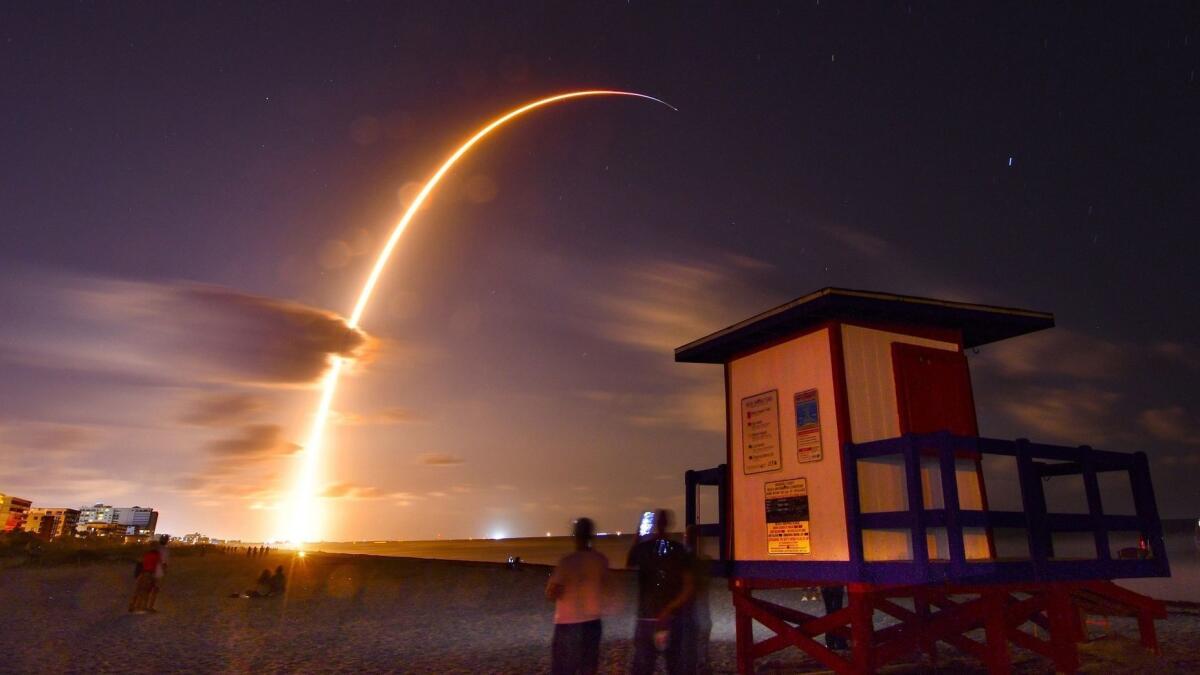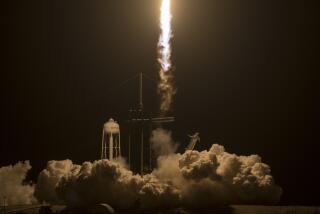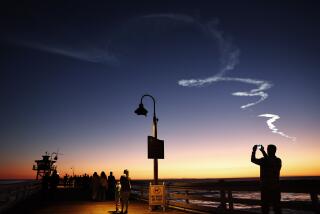Space gets more crowded: ESA satellite veers to avoid hitting SpaceX satellite

Three months after Elon Musk’s SpaceX launched the first set of satellites for a constellation that will eventually contain more than 1,000, another satellite operator already has had to veer to keep its spacecraft out of harm’s way.
The European Space Agency tweeted Monday that it fired the thrusters on its Earth-observation satellite Aeolus to avoid a potential collision with one of SpaceX’s Starlink satellites, which are intended to eventually provide broadband internet service to rural and semirural areas.
This type of maneuveris typically used to veer away from dead satellites or debris from previous collisions, the agency said. Moving to avoid hitting an active satellite is “very rare,” ESA tweeted.
SpaceX said that it corresponded late last month with ESA’s Aeolus operations team about collision probability estimates, and that both organizations determined a maneuver wasn’t needed. Later, the U.S. Air Force released an update showing that the probability of a collision rose. But, SpaceX said, a “bug in our on-call paging system” kept the Starlink operator from seeing that message.
“SpaceX is still investigating the issue and will implement corrective actions,” the Hawthorne company said in a statement. “Had the Starlink operator seen the correspondence, we would have coordinated with ESA to determine best approach with their continuing with their maneuver or our performing a maneuver.”
The potential for satellite collisions is on track to grow. SpaceX is one of several companies planning to launch constellations of hundreds or thousands of small satellites to provide broadband service. OneWeb, which is backed by British billionaire Richard Branson and Japan’s SoftBank Group Corp., has already launched several satellites, and this year Amazon.com Inc. joined the satellite internet space race with plans for its own Project Kuiper constellation.
To adapt to this new space landscape, ESA said it is preparing to automate avoidance maneuvers using artificial intelligence.
“As the number of satellites in orbit increases, due to ‘mega constellations’ such as Starlink ... today’s ‘manual’ collision avoidance process will become impossible,” the agency tweeted.
Bloomberg was used in compiling this report.
More to Read
Inside the business of entertainment
The Wide Shot brings you news, analysis and insights on everything from streaming wars to production — and what it all means for the future.
You may occasionally receive promotional content from the Los Angeles Times.











